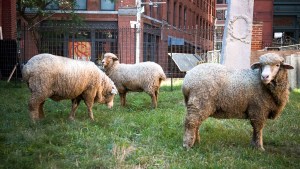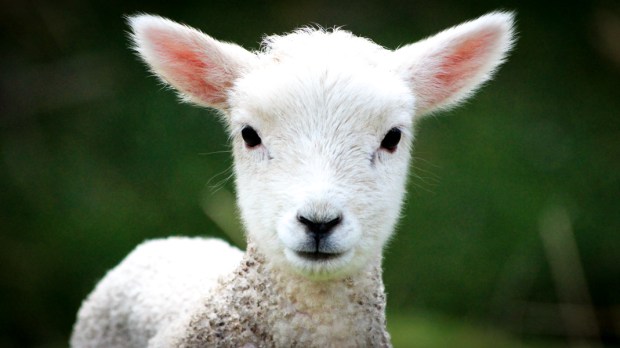A lamb is a young sheep and is defenseless against any enemy. When taken from the flock, a lamb has a very low survival rate. It will either by attacked by a predator or get stuck somewhere and die.
Why, then, has a lamb become the ultimate symbol of Christ?
In the Book of Genesis God asked Abraham to sacrifice his own son, and on the way to the altar Abraham said to Isaac, “God will provide himself the lamb for a burnt offering” (Genesis 22:8). Abraham ended up sacrificing a ram. This passage introduced the notion of the lamb provided by God as the perfect sacrificial offering.
The life-saving significance of the sacrificial lamb was underlined in the Book of Exodus, when God instructed the Israelites to sacrifice a lamb at the Passover, and to repeat that sacrifice as a yearly tradition.
The prophet Isaiah declared that God’s servant would be, “oppressed, and he was afflicted, yet he opened not his mouth; like a lamb that is led to the slaughter, and like a sheep that before its shearers is dumb, so he opened not his mouth” (Isaiah 53:7).
All these incidents and references prepared God’s people for the coming of the true Lamb.
Then fast forward to John the Baptist who proclaims, when he sees Jesus, “Behold, the Lamb of God, who takes away the sin of the world!” (John 1:29)
Jesus goes on to fulfill the role of the “Lamb of God” and is defenseless before the people and is led to his death freely, without any hesitation. His sacrifice as the true lamb that Abraham was referring to opens up the gates of Heaven and showers down upon the world a flood of grace. He is the Paschal Lamb whose sacrifice frees us from bondage to the slavery of sin and death.
In this regard, an animal known for its weakness becomes a symbol of strength, conquering evil through the ultimate sacrifice of one’s life.
The Lamb shows up again in the Book of Revelation as this symbol of strength, “standing, as though it had been slain” and the focus of all heavenly worship (see Revelation 5).
Not surprisingly the lamb was a popular image of the early Church, frequently evoked as a symbol of Christ and the crucifixion. The lamb was also used as a symbol of the Christian people, who are frequently referred to as sheep, under the guidance of the Good Shepherd, Jesus Christ.
The lamb remains a powerful image that contradicts its weak nature, highlighting the fact that “the weakness of God is stronger than men” and how God often works in our weaknesses to bring about the greatest good.

Read more:
They’re baaaack: The landscaping sheep return to NYC’s Old St. Patrick’s

